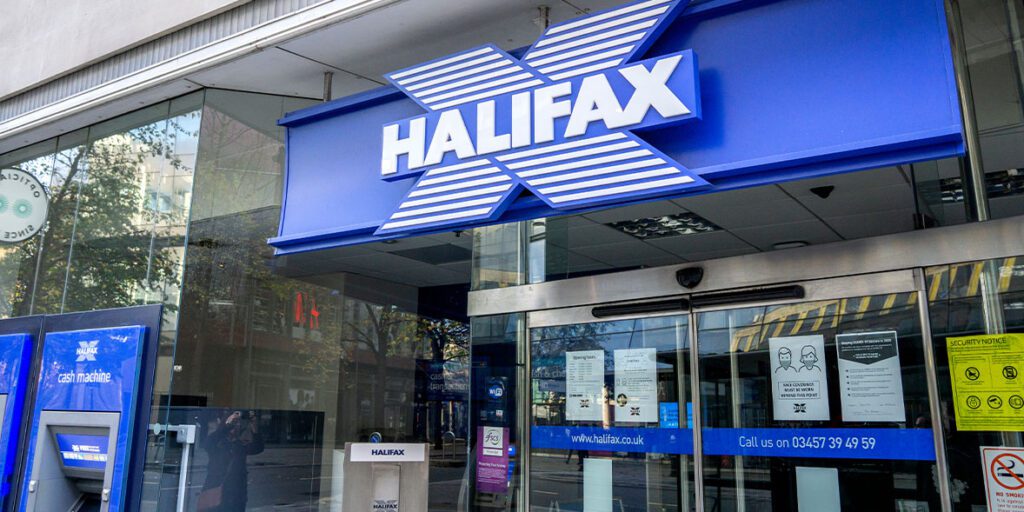Halifax customers are currently facing a surge in sophisticated phishing scams. These include fake text messages and deceptive copycat websites, posing a significant risk. Recently, Which? highlighted a scam involving a fake Halifax website, luring customers through misleading emails to update their contact details. Now, a newer scam is in play, using text messages to direct unsuspecting individuals to a similar, fraudulent website.
Decoding the Latest Scam Text Message
This latest scam involves a text message originating from ‘HalifaxUK’, falsely claiming that the recipient has requested a password change. It then cunningly directs them to a bogus website. The text implies urgency, prompting immediate action, a typical tactic used by fraudsters. A notable red flag here is the misspelt URL, which deviates from Halifax’s authentic website. Despite this, the convincing nature of the message can easily mislead recipients.
Fraudsters have upped their game by employing number spoofing. This technology masks the actual sender number, making the scam text appear as if it’s from a legitimate Halifax number. Banks can counter this threat by registering with the SMS SenderID Protection Registry, a system developed by the Mobile Ecosystem Forum (MEF). This allows them to safeguard their messaging headers and prevent impersonation by fraudsters.
Investigating the Scam
Upon examining a screenshot of the scam message, Halifax confirmed its fraudulent nature, clarifying that genuine messages are sent from ‘Halifax’, not ‘HalifaxUK’. The scam website linked in the text was blocked, but further investigation revealed another, more convincing fake website. Using correct spelling and a URL similar to Halifax’s real site, this site mimicked the bank’s branding, offering various services and even featuring a detailed ‘about us’ page to appear legitimate.
Most often, there are noticeable indicators in a fraudulent text or email that suggest it’s not authentic. These signs typically include spelling or grammar errors made by the fraudsters, potentially because English might not be their first language. It’s important to stay vigilant; if anything appears off or feels suspicious, it’s safer not to trust it.
The Risk of Personal Data Theft
These scam websites pose a substantial risk of personal and financial data theft. Designers create these websites to mimic authentic banking services, thus deceiving visitors into revealing sensitive information. This situation underscores the critical importance of fraud prevention and the need for constant vigilance.
Fraudulent websites such as these can be difficult to identify because fraudsters meticulously craft them to mirror the original sites closely. This task becomes even more daunting for older individuals, particularly those who rarely use online banking, making it harder for them to distinguish between authentic and fake websites.
Halifax’s Response
Halifax responded promptly, confirming the fraudulent nature of these websites and initiating the process for their removal. However, this requires cooperation from domain registrars as well. A spokesperson emphasised Halifax’s commitment to protecting customers from fraud, urging tech companies to intensify efforts against fraudsters using their platforms for impersonation.
To combat these scams, customers should directly contact the company or check their online accounts upon receiving unexpected texts. They should also avoid following links in unsolicited messages. Reporting scam texts is easy and essential – simply forward the message to 7726 for investigation and potential blocking by service providers. Malicious websites can also be reported to the National Cyber Security Centre.
Immediate Action for Victims
In case of suspected scam involvement or accidental disclosure of information to fraudsters, it is crucial to act swiftly. Contacting the bank immediately using the number on your bank card and reporting the incident to Action Fraud are vital steps. In Scotland, the police can be informed by calling 101. Prompt reporting is key in fraud prevention and helps protect individuals and others from falling victim to similar scams.
These scams can unleash a trove of valuable information for fraudsters, often only detected after significant damage has occurred. If fraudsters gain access to your online banking, they can execute transfers, apply for loans, increase overdrafts, alter credit limits, or even remortgage properties. In some cases, they might access your entire credit file. Like all types of fraud, it’s crucial to implement preventative measures beforehand, as taking action after falling victim is often too late.



